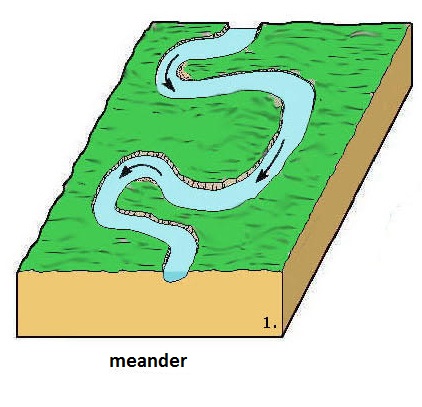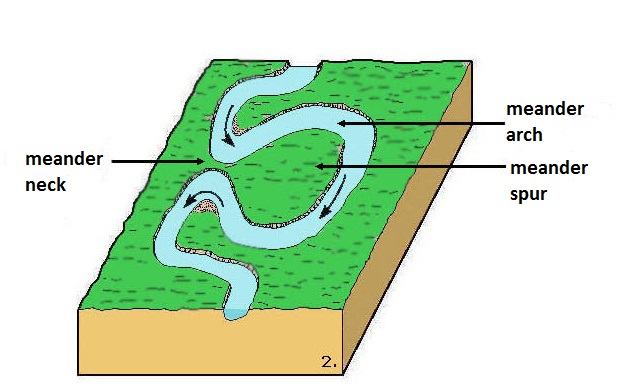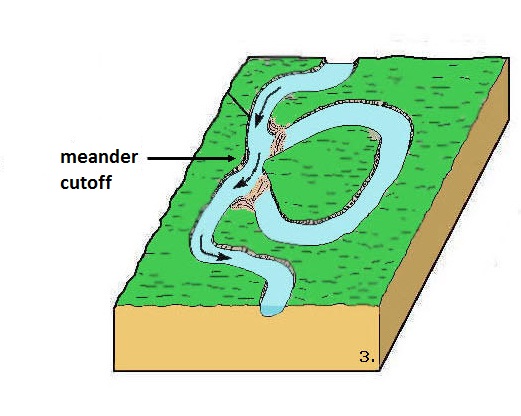Meanders – Typical component of the Danube landscape
The channel of the Little Danube meanders greatly. These meanders are responsible for the wayward path of the river through the Danube basin. A meander is a place where a waterway strays from a straight path and curves. The name is taken from the Meander River in modern-day Turkey. A meander itself is composed of a bend with two segments, the upper arm is upstream from the bend and the lower arm is downstream of the bend. The land inside the meander between the upper and low arm of the meander bend is called the meander spur with the narrow part of the meander bend known as the meander neck.
The Little Danube meanders freely, with its bends only formed by the river´s own sediments carried through its channel, into which the river is unable to cut given the tectonic settling in the area.
Formation and development of meanders
Meanders are created by side erosion in waterways and the deposition of materials. The force of the water against one of the banks of a waterway creates an undercut slope and a slip-off slope on the opposite banks of the river. The undercut slope loses material to erosion caused by the force of the water with these river sediments then deposited on the slip-off slope. The meander gradually increases in size thanks to this side erosion and it moves against the current. Eventually, meander spurs shrink and meander necks narrow, choking the meander off. The current, in particular during flooding, cuts through the mender neck, thereby shortening its path. This results in an abandoned meander. Solitary hills, or cut- offs, remain from meander spurs that are cut off when a meander closes. Abandoned meanders are a relatively common occurrence around the Danube and the Little Danube. They turn into ox-bow lakes as the water stops flowing through them. These ox-bow lakes most commonly have a crescent shape.

They turn into ox-bow lakes as the water stops flowing through them. These ox-bow lakes most commonly have a crescent shape. Ox-bow lakes are initially kept alive by water from the river that seeps in through the sediment. They become overgrown with water plants and fill with clay sludge from the decomposition of plant and animal residues. Eventually they are transformed into swamps, a damp meadow or even dry land. The strip of land in which a waterway meanders and that has abandoned meanders and ox-bow lakes is called the meander zone.



